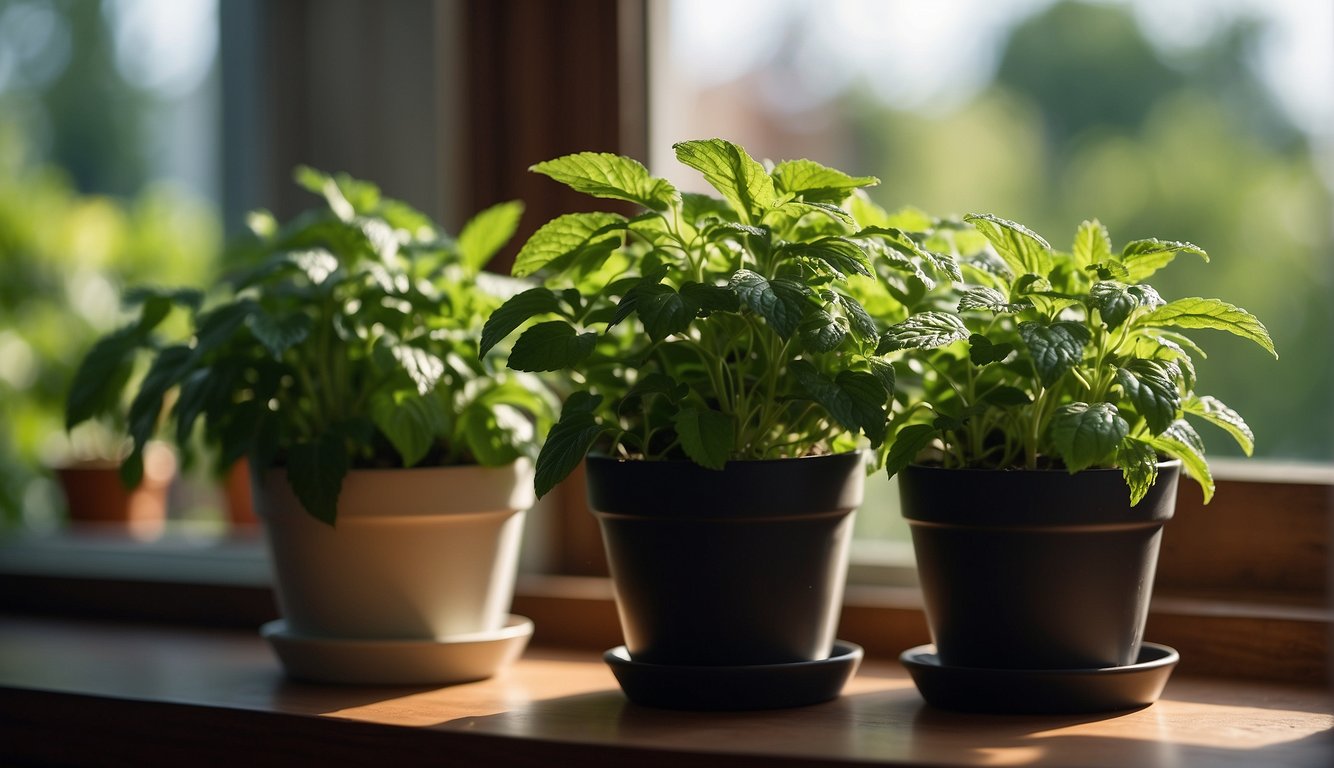TheHerbProf.com is a treasure trove of knowledge for those interested in natural healing and herbal remedies. The website is run by Paul Johnston MD. A naturopathic who has not only received extensive education in the field but also has personal experience in self-healing.
Growing spearmint indoors is a great way to have fresh herbs all year round. Spearmint is a popular herb that is known for its refreshing aroma and taste. It is easy to grow and care for, making it a popular choice for indoor gardening enthusiasts.
To start growing spearmint indoors, you will need to choose a container that is large enough to accommodate the plant’s roots. A pot that is at least 6 inches deep and 8 inches wide is recommended. You will also need to choose a potting mix that is well-draining and rich in nutrients. Spearmint prefers soil that is slightly acidic with a pH of around 6.0 to 7.0.
When it comes to lighting, spearmint requires bright, indirect light. A south-facing window is ideal, but if you don’t have access to one, you can use artificial lighting. A grow light that emits a full spectrum of light is recommended. With the right container, soil, and lighting, you can easily grow spearmint indoors and enjoy fresh herbs all year round.
Benefits of Growing Spearmint Indoors
As someone who loves to cook and experiment with flavors, I’ve found growing spearmint indoors to be incredibly rewarding. Not only does it add a fresh and invigorating aroma to my home, but it also offers a host of culinary and medicinal benefits.
One of the main advantages of growing spearmint indoors is the convenience it provides. Having fresh herbs readily available in your home means you can add them to your dishes at any time, without having to make a trip to the grocery store. Spearmint has a unique flavor that pairs well with a variety of foods, including salads, soups, and desserts.
In addition to its culinary uses, spearmint has long been used for its medicinal properties. It contains compounds that have been shown to have anti-inflammatory, antispasmodic, and antiseptic effects. Spearmint tea is a popular way to enjoy these benefits, and growing your own plant means you can have fresh leaves for tea whenever you like.
Another benefit of growing spearmint indoors is that it can be used to make essential oils. Spearmint oil has a refreshing scent and is used in a variety of products, including soaps, candles, and perfumes. Having your own indoor mint plant means you can experiment with making your own oils and other natural products.
Overall, growing spearmint indoors is a simple and rewarding way to add flavor, aroma, and health benefits to your home. Whether you’re a culinary enthusiast or just looking for a natural way to improve your well-being, spearmint is a versatile and easy-to-grow houseplant that is definitely worth considering.
Acquiring Spearmint Plants for Indoor Cultivation
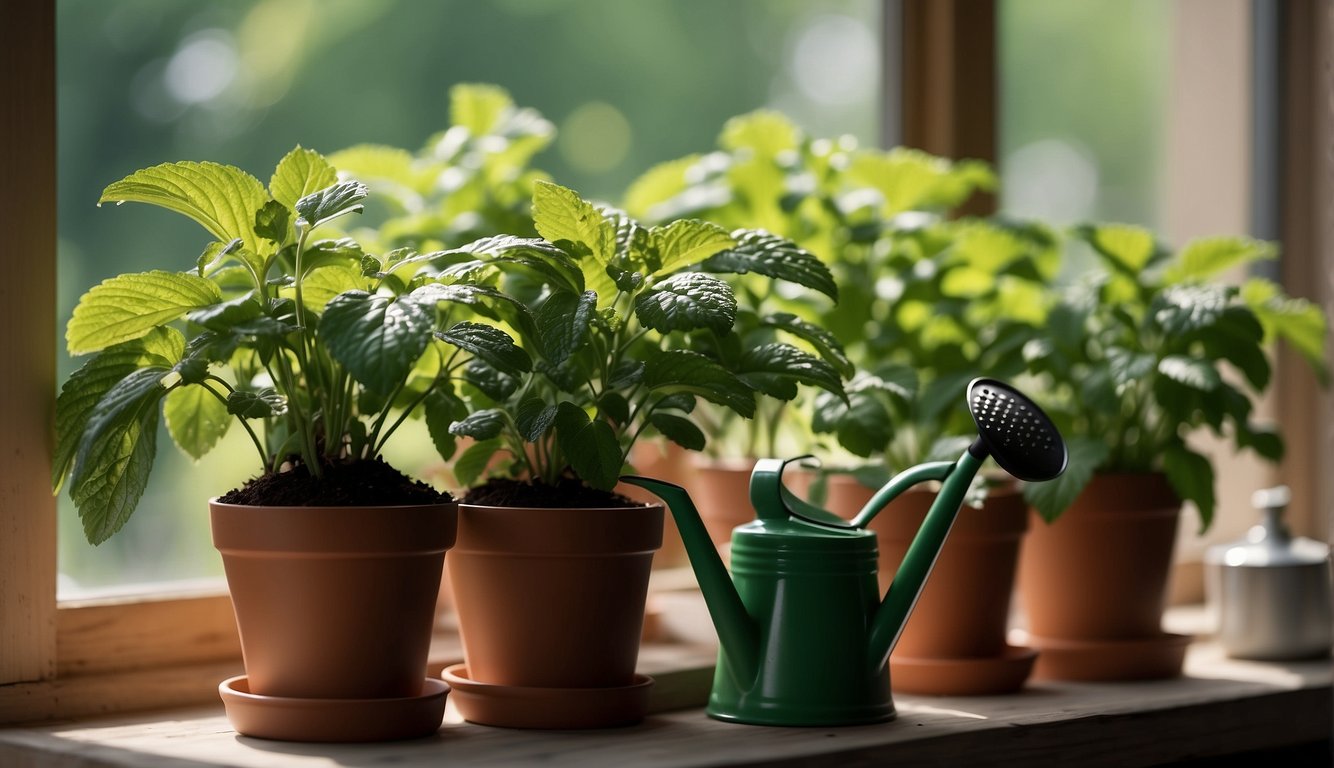
When it comes to acquiring spearmint plants for indoor cultivation, there are a few options available. One option is to purchase spearmint seeds and grow them from scratch. Another option is to purchase spearmint cuttings or seedlings from a nursery or garden center.
If you choose to grow spearmint from seeds, it’s important to note that spearmint is a type of mint and there are many different mint varieties available. Make sure to purchase spearmint seeds specifically, as other mint varieties may not have the same flavor or growth habits as spearmint. It’s also important to note that spearmint seeds can take up to two weeks to germinate, so be patient and make sure to keep the soil moist until germination occurs.
If you prefer to start with established plants, purchasing spearmint cuttings or seedlings can be a good option. When purchasing cuttings, make sure to choose healthy stems that are at least 4-6 inches long. Cuttings can be rooted in water or directly in soil. When purchasing seedlings, look for plants that are healthy and have a good root system.
Once you have acquired your spearmint plants, it’s important to plant them in the right conditions. Spearmint plants require at least 6-8 hours of direct sunlight daily, so choose a sunny spot near a south-facing window where the plant can receive ample sunlight. Additionally, spearmint plants prefer well-draining soil that is kept moist but not waterlogged.
In summary, whether you choose to grow spearmint from seeds or purchase cuttings or seedlings, make sure to choose healthy plants and plant them in the right conditions. With proper care, you can enjoy fresh spearmint year-round right in your own home.
Basic Guidelines for Indoor Spearmint Cultivation
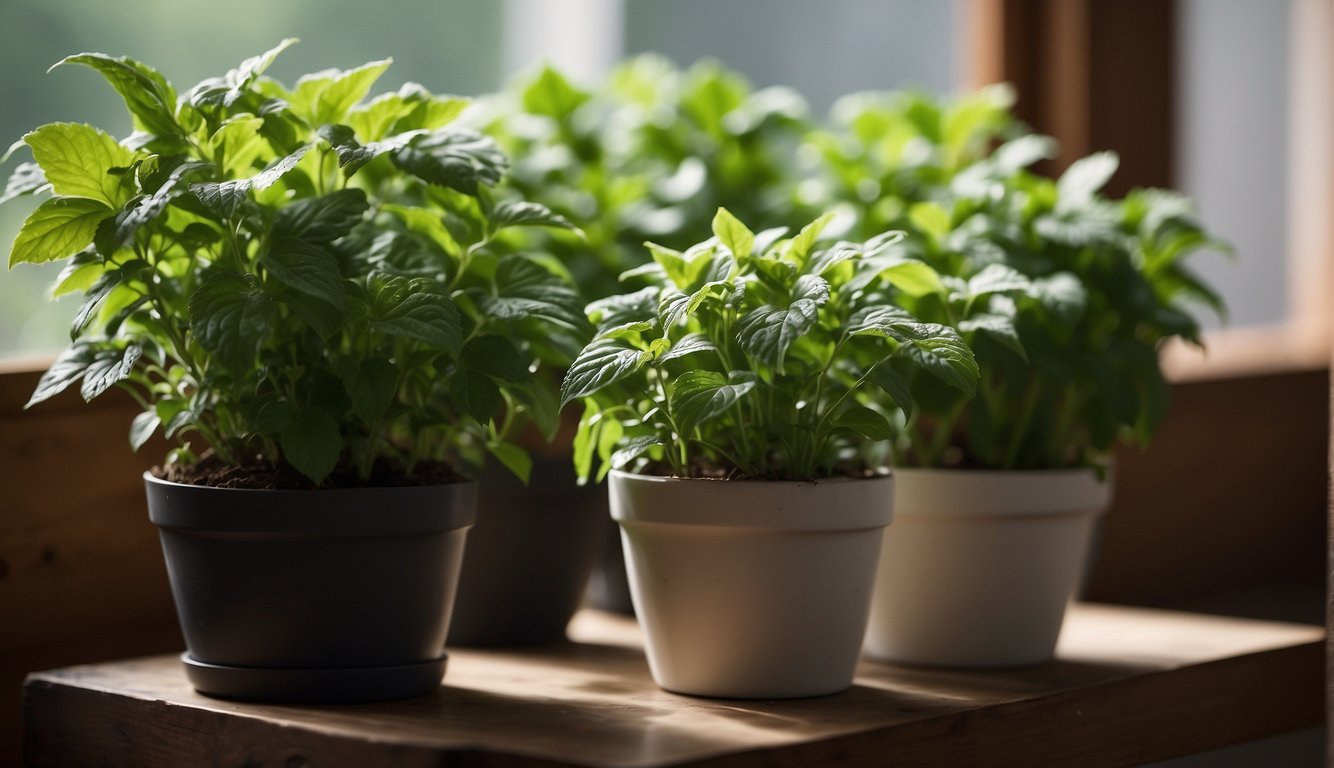
Growing spearmint indoors is an excellent way to enjoy the fresh taste of this herb year-round. Here are some basic guidelines to follow for successful indoor spearmint cultivation.
Appropriate Container Selection
The container you choose for spearmint should be large enough to accommodate the plant’s root system. A 6 to 8-inch pot is ideal for a single plant. Choose a container with drainage holes to prevent waterlogging.
Use of Fresh Potting Mix
Use nutrient-rich soil for growing spearmint. A well-drained soil type is best, and the pH should be between 6.0 and 7.0. A mixture of compost and potting soil is ideal for spearmint. Fresh potting mix should be used to ensure that the soil is free of pests and diseases.
Consistent Watering
Spearmint requires consistent moisture, but it should not be overwatered. Water the plant when the soil feels slightly dry to the touch. Make sure to water the soil, not the leaves, to prevent fungal diseases. A plastic bag can be used to cover the pot to maintain humidity.
By following these basic guidelines for indoor spearmint cultivation, you can enjoy fresh spearmint year-round. Remember to provide the plant with adequate sunlight, temperature, and humidity to ensure its health.
Fertilizing and Pruning Indoor Spearmint
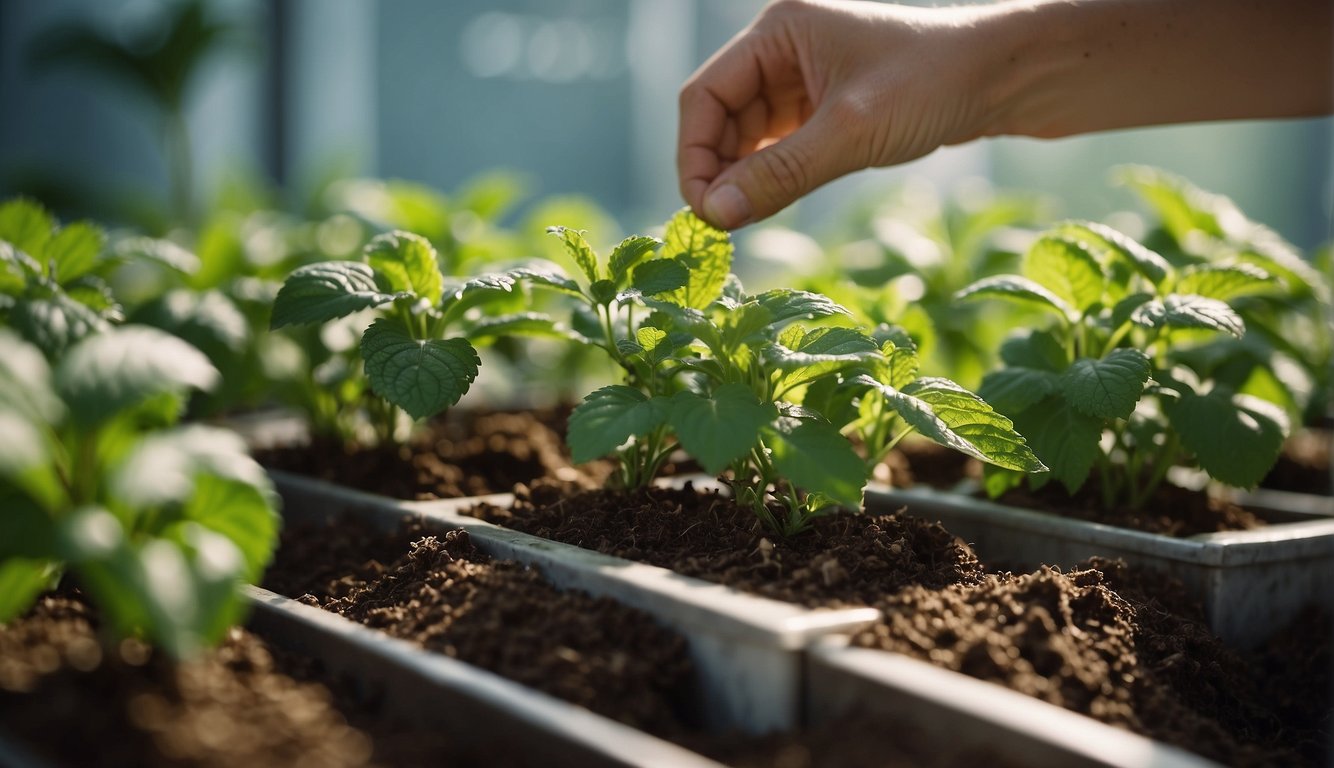
As a spearmint plant grows, it will require some maintenance to keep it healthy and productive. This maintenance includes fertilizing and pruning.
Fertilizing Indoor Spearmint
Indoor spearmint plants need nutrient-rich soil to grow healthy and strong. While it is possible to use regular potting soil, it is better to use a soil mix that is specifically formulated for herbs. These soil mixes have added nutrients that will help your spearmint plant grow and thrive.
In addition to using a nutrient-rich soil mix, you can also fertilize your indoor spearmint plant. Fertilizing your plant will help it grow faster and produce more leaves. You can use a liquid fertilizer that is specifically formulated for herbs. Follow the instructions on the fertilizer package for the correct dosage and frequency.
Pruning Indoor Spearmint
Pruning is an important part of growing indoor spearmint. Also, Pruning helps to keep the plant from becoming too leggy and encourages new growth. It also helps to prevent the plant from becoming too crowded and reduces the risk of pests and diseases.
To prune your indoor spearmint plant, use a pair of sharp scissors or pruning shears. Cut back any stems that are growing too tall or becoming too crowded. Be sure to leave at least two sets of leaves on each stem. This will help to encourage new growth and prevent the plant from becoming too stressed.
In conclusion, fertilizing and pruning indoor spearmint is essential to keep the plant healthy and productive. By using a nutrient-rich soil mix and fertilizing your plant, you can help it grow faster and produce more leaves. Pruning will help to keep the plant from becoming too leggy and encourage new growth.
Techniques for Growing Spearmint Indoors

Growing spearmint indoors is a great way to enjoy its refreshing aroma and flavor all year round. Here are some techniques for growing spearmint indoors that you can try:
Growing in Soil
One of the easiest ways to grow spearmint indoors is in soil. Choose a pot that is at least 6 inches deep and has good drainage. Fill the pot with nutrient-rich soil and plant the spearmint seedlings or cuttings about 2 inches deep. Water the soil until it is moist but not waterlogged. Place the pot in a location that receives at least 4 hours of sunlight per day. Water the plant regularly, but be careful not to overwater it.
Growing in Water – Growing Spearmint Indoors
Another way to grow spearmint indoors is in water. Take a cutting from an existing spearmint plant and place it in a jar of water. Change the water every few days to prevent it from becoming stagnant. Once the roots have grown to about 2 inches long, transplant the cutting into a pot with soil. Water the plant regularly, but be careful not to overwater it.
Hydroponic Cultivation
Hydroponic cultivation is a method of growing plants without soil. It involves growing plants in a nutrient-rich water solution. To grow spearmint using hydroponics, you will need a container, a nutrient solution, and a rooting hormone. Fill the container with the nutrient solution and add the rooting hormone. Place the spearmint cuttings in the solution, making sure that the leaves are above the water level. Change the solution every few weeks. Spearmint grown using hydroponics will grow faster than those grown in soil.
In conclusion, growing spearmint indoors is easy and fun. You can choose to grow it in soil, water, or using hydroponics. Regardless of the method you choose, make sure to provide your spearmint plant with enough sunlight, water, and nutrients to help it thrive.
Harvesting Indoor Spearmint – Growing Spearmint Indoors
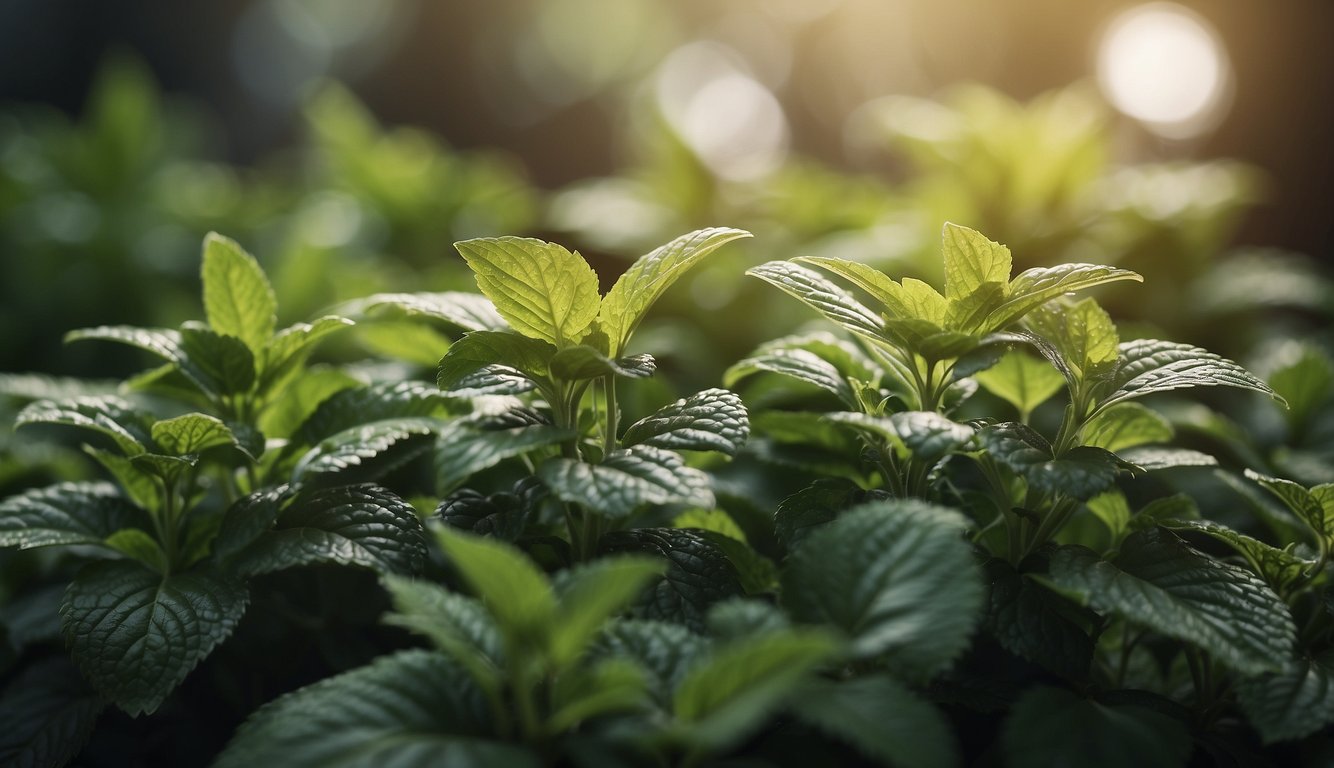
After growing spearmint indoors, you may be wondering when and how to harvest it. Harvesting is a crucial step in the process of growing spearmint as it allows you to enjoy the fresh flavor and aroma of this versatile herb. Here are a few tips on harvesting indoor spearmint:
Timing – Growing Spearmint Indoors
The best time to harvest spearmint is in the morning when the essential oils are at their peak. You can also harvest it in the afternoon, but the oils may not be as concentrated. It is important to wait until the plant has grown to a height of 6-8 inches before harvesting. This will ensure that the plant has enough leaves to continue growing.
Method
When harvesting spearmint, it is important to use a sharp pair of scissors or garden shears to avoid damaging the plant. Cut the stems just above the second or third set of leaves from the top. This will encourage the plant to branch out and produce more leaves. Avoid cutting the stems too close to the base of the plant as this can damage the roots.
Frequency
You can harvest spearmint as often as you like, but it is recommended to wait at least 3-4 weeks between harvests to allow the plant to recover. You can also harvest the leaves individually as needed, but be sure to leave at least half of the leaves on the plant to allow it to continue growing.
Storage – Growing Spearmint Indoors
Fresh mint can be stored in the refrigerator for up to a week. To store it for longer periods, you can dry the leaves by hanging them upside down in a cool, dry place. Once dry, store them in an airtight container in a cool, dark place. You can also freeze the leaves by placing them in a freezer bag and removing as much air as possible before sealing. Frozen mint can be stored for up to 6 months.
With these tips, you can harvest your indoor spearmint and enjoy its fresh flavor and aroma all year round.
Before You Go – Growing Spearmint Indoors
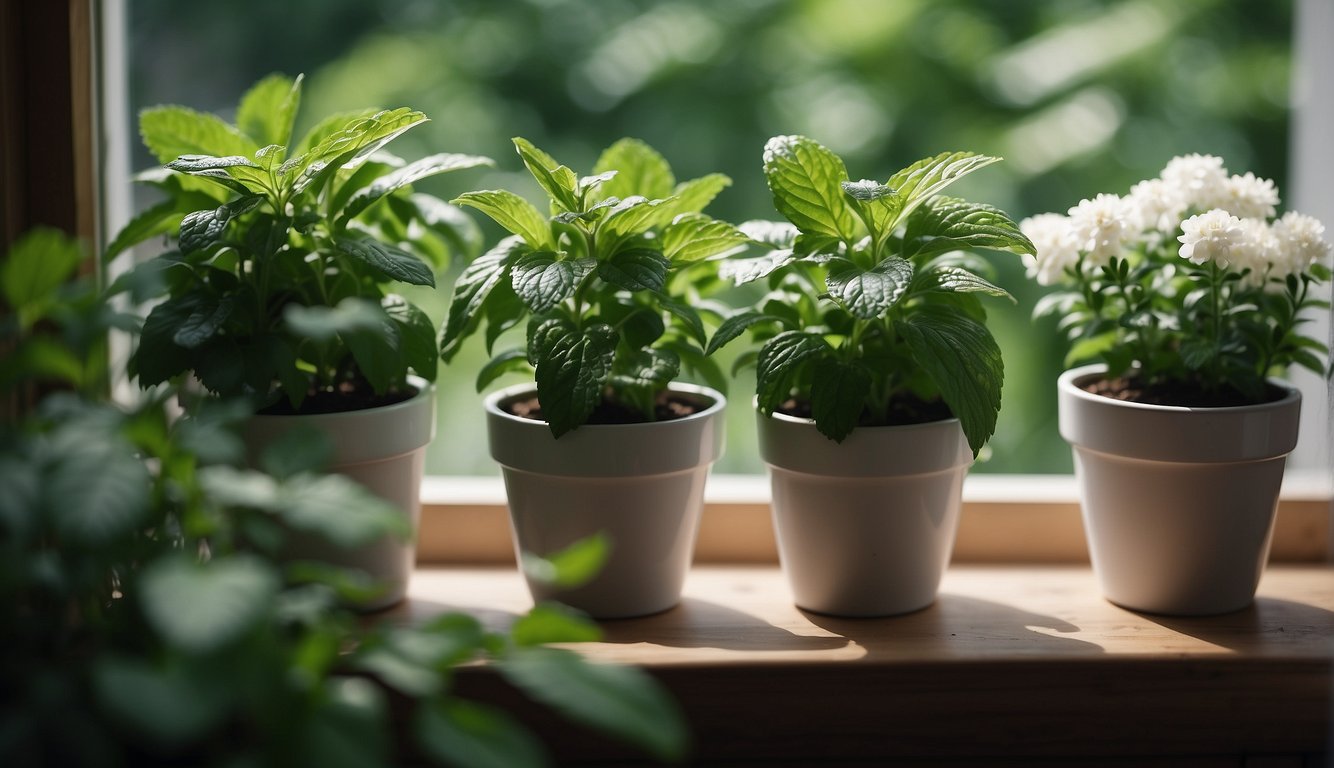
Growing spearmint indoors is a great way to enjoy the fresh scent and taste of this herb year-round. With the right care tips, you can easily grow a healthy and productive spearmint plant in your home.
To recap, choosing the right container, providing adequate lighting, and watering and feeding your spearmint plant regularly are all important factors in its care. Additionally, maintaining the right temperature and humidity levels, as well as harvesting your spearmint plant properly, can help ensure its continued growth and health.
Aside from its pleasant aroma and taste, spearmint also offers a range of health benefits. It is known to aid digestion, relieve stress and anxiety, and even improve memory and cognitive function. So not only is it a great addition to your home decor, but it can also contribute to your overall well-being.
In conclusion, growing spearmint indoors is a fun and rewarding experience that can provide you with fresh herbs and a range of health benefits. By following these care tips, you can easily grow a thriving spearmint plant in your home and enjoy its many uses.
Growing Spearmint Indoors: A Herbalist’s Journey
Today, we’re diving into the refreshing world of spearmint. Specifically, we’re going to talk about growing spearmint indoors. Yes, you can grow this aromatic herb right in your home!
First off, let’s talk about why you’d want to grow spearmint indoors. It’s simple – it’s a fantastic way to have fresh spearmint on hand for your culinary creations! Plus, it’s a great way to bring a touch of greenery indoors.
Now, let’s tie this back to theherbprof.com. As your friendly neighborhood Herbalist Blogger, I’m all about helping you nurture your green thumb. And growing spearmint indoors? It’s a perfect example!
By growing your own spearmint, you’re not just adding flavor to your dishes. You’re also embracing the principles of indoor gardening, a topic I’m passionate about and often discuss on my blog, theherbprof.com.
So, why not give it a try? Grab a pot, some soil, and spearmint seeds, and start your indoor gardening adventure. Your taste buds (and your indoor garden) will thank you!
References – Growing Spearmint Indoors
Little Herb Encyclopedia, by Jack Ritchason; N.D., Woodland Publishing Incorporated, 1995
The Ultimate Healing System, Course Manual, Copyright 1985, Don Lepore
Planetary Herbology, Michael Tierra, C.A., N.D., Lotus Press, 1988
Handbook of Medicinal Herbs, by James A. Duke, Pub. CRP Second Edition 2007
The Complete Medicinal Herbal, by Penelope Ody, Published by Dorling Kindersley
Check the Following Articles!
Pros and Cons of Salvia: A Comprehensive Overview
Grow Carrots in Bag: An Efficient Guide for Beginners
How to Successfully Grow Mint Leaves Indoors?
Frequently Asked Questions – Growing Spearmint Indoors
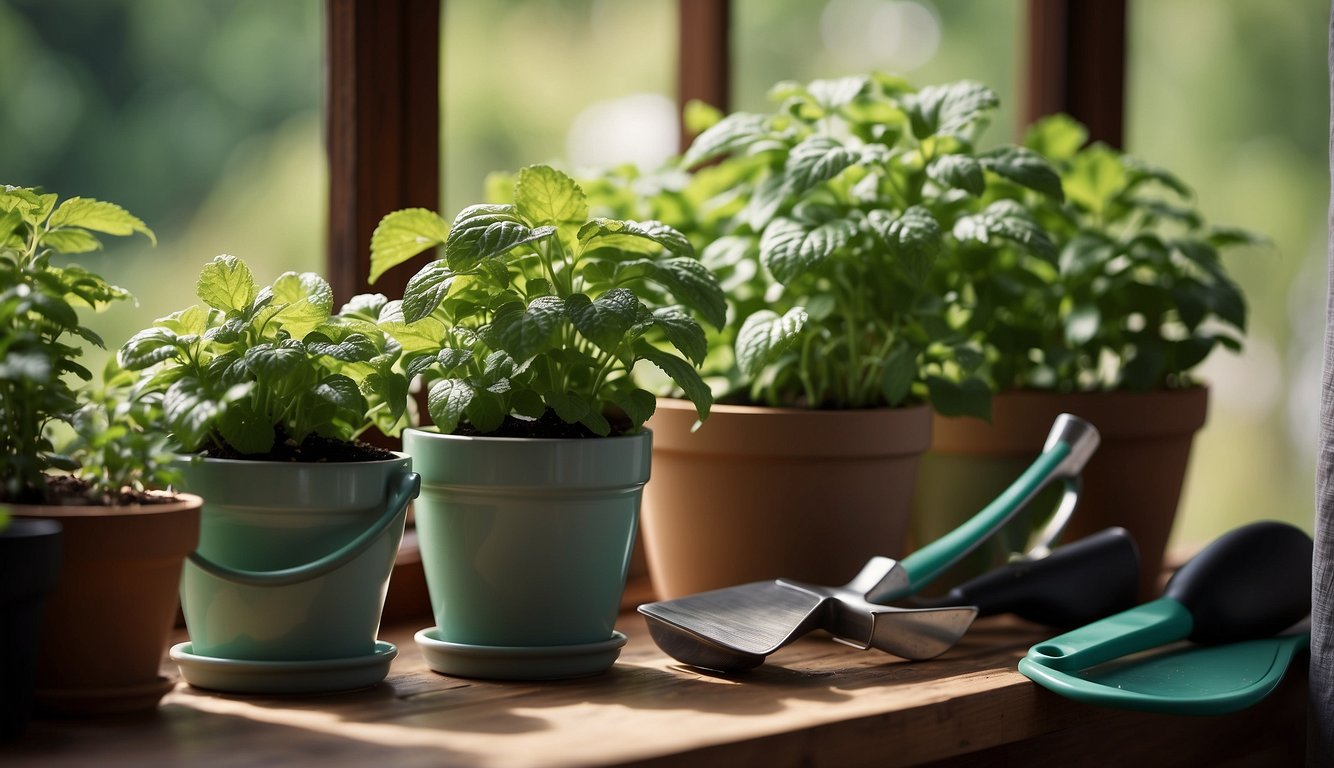
What are the benefits of growing mint indoors?
Growing mint indoors has many benefits. Firstly, it is a great way to have fresh mint leaves on hand for cooking, tea, or simply for their refreshing scent. Secondly, growing mint indoors can help purify the air in your home. Mint plants release oxygen and absorb toxins from the air, making it a great natural air purifier. Lastly, growing mint indoors is a low-maintenance and easy way to add some greenery to your home.
How can you grow mint indoors during the winter season?
Mint is a hardy plant that can be grown indoors during the winter season. To grow mint indoors during the winter, you will need to provide it with enough light. Place your mint plant in a sunny location, such as a windowsill, where it can receive at least 6 hours of sunlight per day. You can also supplement with a fluorescent grow light if necessary. Keep the soil moist, but take care not to saturate the soil.
What are the steps to propagate mint indoors from cuttings?
Propagating mint indoors from cuttings is a simple process. First, take a cutting from a healthy mint plant. Cut a stem that is about 4-6 inches long and remove the leaves from the bottom half of the stem. Place the cutting in a glass of water, making sure that the bottom of the stem is submerged in the water. Change the water every few days and wait for roots to form. Once the roots are about an inch long, you can transplant the cutting into soil.
How do you care for a mint plant indoors?
Caring for a mint plant indoors is relatively easy. Mint plants need well-draining soil and should be watered when the soil starts to feel dry to the touch. They also require at least 6 hours of bright, indirect light each day in order to thrive. To promote bushy growth, pinch off the tips of the stems periodically. Lastly, make sure to keep an eye out for pests, such as spider mites or aphids, and treat them promptly if they appear.
Is it possible for mint to thrive indoors without natural sunlight?
While mint plants prefer bright, indirect sunlight, they can still thrive indoors without natural sunlight. You can supplement with a fluorescent grow light if necessary. Place your mint plant under the grow light for 12-16 hours a day, making sure to keep the light about 6-12 inches away from the plant.
Can mint be successfully grown in water indoors, and if so, how?
Yes, mint can be successfully grown in water indoors. To grow mint in water, take a cutting from a healthy mint plant and remove the leaves from the bottom half of the stem. Place the cutting in a glass of water, making sure that the bottom of the stem is submerged in the water. Change the water every few days and wait for roots to form. Once the roots are about an inch long, you can transplant the cutting into soil or continue to grow it in water.
